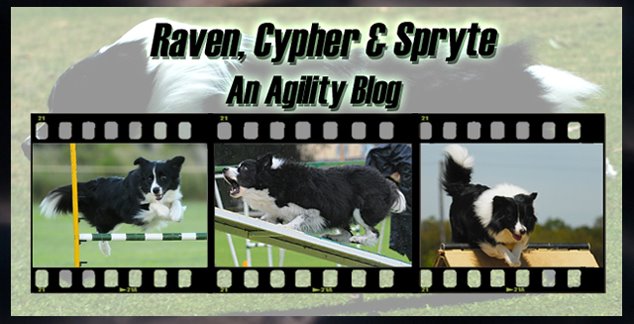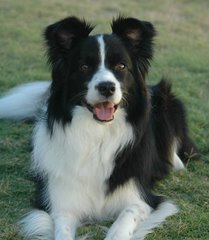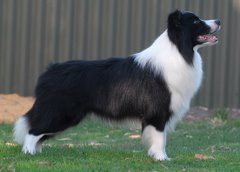Just back from first session with Cathy Slot from Queensland who is over in Perth conducting a jumping workshop based on Susan Salo’s teachings. She has worked with Susan a couple of times now, including 7 days last year in Canada, lucky girl! Anyway this will only be brief as we are back early tomorrow morning for the practical side of things. I was just struck by an observation I had made about something she was talking about. It was regarding how we probably underestimate the power of watching our dogs and others run in trials as a tool for improving our own training in terms of how our dogs jump. It made me realise there is a difference between self criticism and critical reflection. Maybe it’s my edu-speak jargon coming back to haunt me, having been a teacher for seven years now but the word ‘reflection’ to me implies something you do in order to fix things or make them better or to try and improve. I’m not sure about other handlers but quite often I come off a course in trials in full on self criticism mode, able to articulate stridently to all around me (whether they are even remotely interested or not) exactly how I managed to stuff up that run and what a complete doofus I was in not seeing something early enough and what a pity it was because it was all going *so* well up until that point. I hardly ever (in fact never) take the time to watch any videos of my runs, or think about what happened or what I saw taking place in a reflective mode that is constructive rather than negative or completely destructive. Oh sure I go home and write down what happened in each of our runs, what bar dropped and where or what other errors happened. I have the acronym HE in my trial record keeping. It stands for Handler Error. Sadly it has a depressingly regular appearance. But I digress. All I’m trying to say here is that I really need to start applying more critical reflection and less self criticism to my runs. I know Agility is simply a fun sport we play with our dogs and I have managed to get much better over the years at not holding onto those self criticisms for too long. I know there are those out there who would insist such reflection is probably over thinking things but I am of the firm belief that if we don’t try to improve or make things better or become more skilled at what it is we enjoy doing then really, what’s the point? I’m sure people can appreciate that this self improvement can and should happen on many different levels depending on the persons’ perspective. Whether it’s a brand new agility person who simply wants to achieve attention from their dog as they are walking up to a start line or a world champ level who wants to shave those extra milliseconds off their run by tightening up a particular behaviour performance. It is all relative as they say. So I’m looking forward to this weekend with a view to becoming a more critically reflective agility handler/trainer. Jumping seems like a great place to start as no matter what venue you run in or even what event you do (with the exception of tunnellers I guess) there are always going to be jumps, and they are a whole puzzle by themselves that need to be solved before you can broach the whole agility course problem.
![]()




2 comments:
Video is awesome because runs look very different from the handler vs. spectator view point. Sometimes, I think we have terrible wide turns, but on the video, the turn is as tight as can be. Other times, I think I called a command on time, but on the video I am clearly late and cause confusion. Human memory is faulty, especially in the heat of the moment of competition, and I love video. I agree, let's use it more!
"I come off a course in trials in full on self criticism mode, able to articulate stridently to all around me (whether they are even remotely interested or not) exactly how I managed to stuff up that run and what a complete doofus I was in not seeing something early enough and what a pity it was because it was all going *so* well up until that point."
I laughed out loud; that is SO me.
I also note handler errors in my record keeping, but along with noting what went wrong, I can often detect patterns even without video (which I'd love to have more of but so seldom remember to ask anyone to do it). For example, if the error is constantly "wrong end of tunnel," I can (and often do) set up tunnel situations at home and ask for them in class and ask people to watch what I'm doing when that situation comes up again.
-ellen
Post a Comment